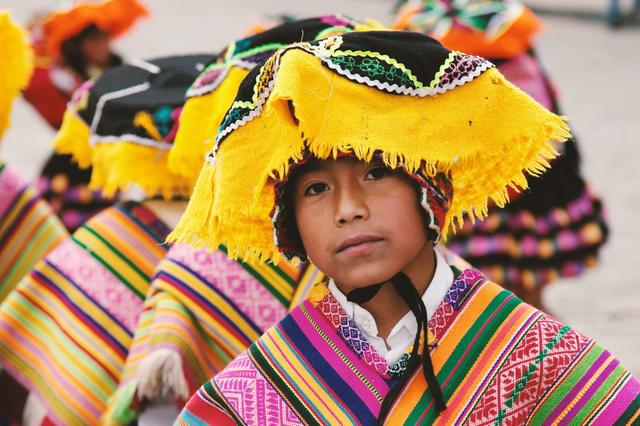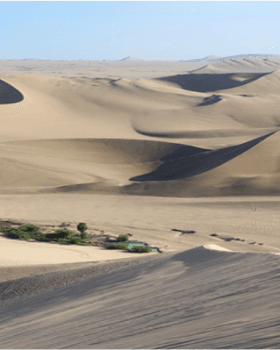

Colca Canyon
colca canyon: best time to trek & tipsColca Canyon ranks among Peru’s most iconic natural wonders. Located northeast of Arequipa, this deep valley reaches a depth of about 4,160 meters, making it one of the world’s most dramatic canyons. As compelling as Colca Canyon is, it isn’t ideal to visit year-round. Below we share when’s the best time to explore it and how to make the most of Colca Canyon tours.
Colca Canyon Peru: Location & Access
The Colca Canyon is one of Peru’s most breathtaking natural wonders. Located about 160 km northeast of Arequipa, this deep valley reaches a maximum depth of around 4,160 meters (13,650 ft), making it one of the deepest canyons in the world, more than twice as deep as the Grand Canyon in the United States. The canyon stretches for over 70 km (43 miles) along the Colca River and is framed by snow-capped volcanoes such as Ampato, Sabancaya, and Mismi, the latter often cited as the source of the Amazon River. With dramatic landscapes, traditional Andean villages, and the legendary flight of the condor, the Colca Canyon has become one of the country’s most iconic destinations.
Reaching the canyon is relatively easy. From Arequipa, it takes about 3–4 hours by bus, private transfer, or on an organized tour. The route winds through the Pampas Cañahuas National Reserve, a protected area at over 3,800 m.a.s.l., home to wild vicuñas, alpacas, and unique high-Andean flora. Most travelers spend at least one night in Chivay (3,635 m.a.s.l.), the main gateway to the valley, before continuing to the deeper parts of the canyon or nearby villages like Yanque and Cabanaconde.

Best Time to Trek the Colca Canyon
The Colca Canyon can be visited year-round, but the best time to trek is between April and December, during the dry season, when the weather is stable and skies are crystal clear. Condor sightings are also most frequent during these months.
Dry season (April – December): Expect sunny days with cooler nights. Daytime temperatures range from 15–25°C (59–77°F), but can drop below freezing after sunset.
Rainy season (January – March): Trails may become muddy and visibility limited, yet this is when the valley is at its greenest, with waterfalls and blooming wildflowers.
If you’re deciding between months:
- April–June: Ideal for trekking—green landscapes, mild temperatures, and good visibility.
- July–September: Peak season with more visitors; dry and crisp weather, excellent for photography.
- October–December: Still dry, fewer crowds, and warmer days.
No matter the season, always carry sunscreen, a hat, and plenty of water. The high-altitude sun in the Andes is strong even on cloudy days.

Trek Recommendations
Before embarking on your trek, it’s advisable to spend at least one night in Arequipa to acclimate to the altitude. Trekking in the Colca Canyon is physically demanding due to steep descents and ascents — the canyon walls can drop over a kilometer in elevation — so proper preparation is essential.
Trek options:
- 1-day tours: Panoramic visits to viewpoints like Cruz del Cóndor and local villages without descending into the canyon. Best for travelers short on time.
- 2-day treks: Descend to the canyon floor, spend the night at an oasis or lodge such as Sangalle, and hike back up early the next morning. Perfect balance between challenge and reward.
- 3-day treks: A slower pace that allows time to explore lesser-known villages, terraces, and trails while minimizing fatigue.
Practical advice:
- There are no porters or mules (as on the Inca Trail), so you’ll need to carry your own pack.
- Bring sturdy hiking boots, warm layers, sunscreen, a flashlight, and 1.5–3 liters of water per day.
- Be prepared for a moderate to challenging hike. The climb back from the canyon floor can take 3–5 hours, depending on the route and fitness level.
- Altitude & safety: The canyon rim averages 3,500 m.a.s.l., so mild altitude symptoms are possible. Ascend gradually, hydrate well, and avoid alcohol the first night.
Destinations Outside of the Colca Canyon
The Cruz del Condor Viewpoint
At 3,287 m.a.s.l., this is one of the canyon’s most famous spots. Here, you can see Andean condors gliding on thermal currents, often at eye level. These majestic birds, with wingspans up to 3 meters (10 ft), symbolize freedom and the sacred connection between the earth and sky in Andean culture. The best viewing time is between 10 a.m. and noon, when the winds are strongest.

The Colca Window
Located at 4,300 m.a.s.l., the Colca Window is a natural rock formation that resembles a portal framing the canyon below. It’s one of the first sights travelers encounter when entering the valley and offers panoramic views ideal for photography and short acclimatization walks.

Andean Terraces & Traditional Villages
Beyond trekking, the Colca Valley is a living cultural landscape. The area is home to pre-Inca agricultural terraces that still produce corn, quinoa, and potatoes, many of them built over a thousand years ago by the Collagua and Cabana peoples. Villages like Chivay and Yanque preserve centuries-old traditions, from weaving and music to colorful festivals honoring local deities, or Apus.
Wildlife is abundant: visitors may spot vicuñas, vizcachas, hummingbirds, and even the elusive Andean fox. Thermal baths in Chivay, local markets, and traditional dances make the region a rewarding stop beyond the canyon itself.

Colca Canyon: Nature, Culture, and Adventure in the Heart of the Andes
The Colca Canyon is more than a trek—it’s an experience that blends nature, culture, and adventure in one of the Andes’ most striking landscapes. Highlights include:
- The majestic flight of the Andean condor.
- The dramatic geology of one of the world’s deepest canyons.
- The vibrant traditions of local communities and ancient terraces.
Exploring the Colca Canyon means immersing yourself in the majesty of the Andes. Plan your trek during the best season, pack carefully, and get ready to discover one of Peru’s most extraordinary destinations.
Would you be ready to experience the Colca Canyon? At Explorandes, we design authentic adventures that combine trekking, culture, and nature in the Andes. Contact us to start planning your journey in Peru.

March - December
5 days / 4 nights

April - October
12 days / 11 nights

April - December
5 days / 4 nights

April - October
6 days / 5 nights






